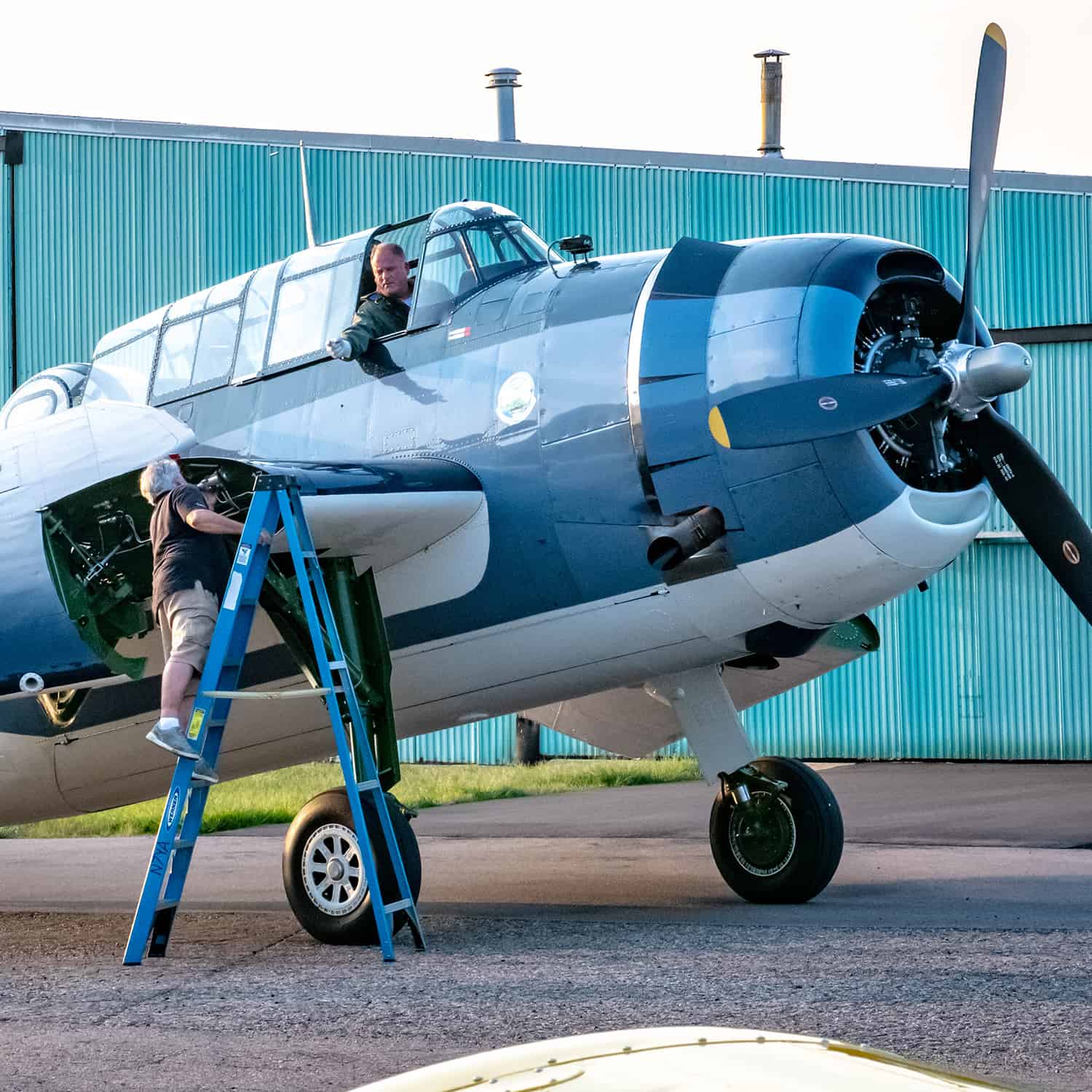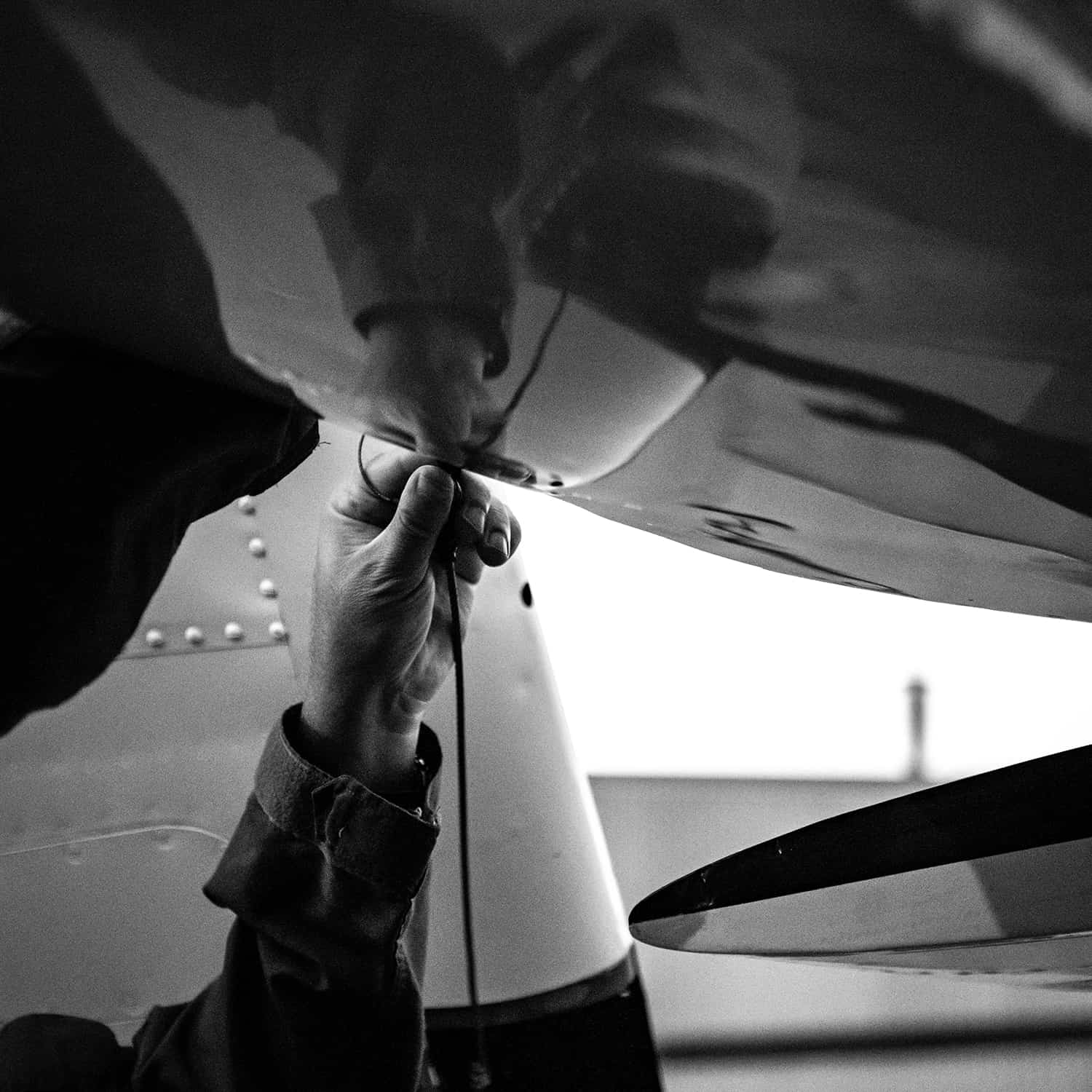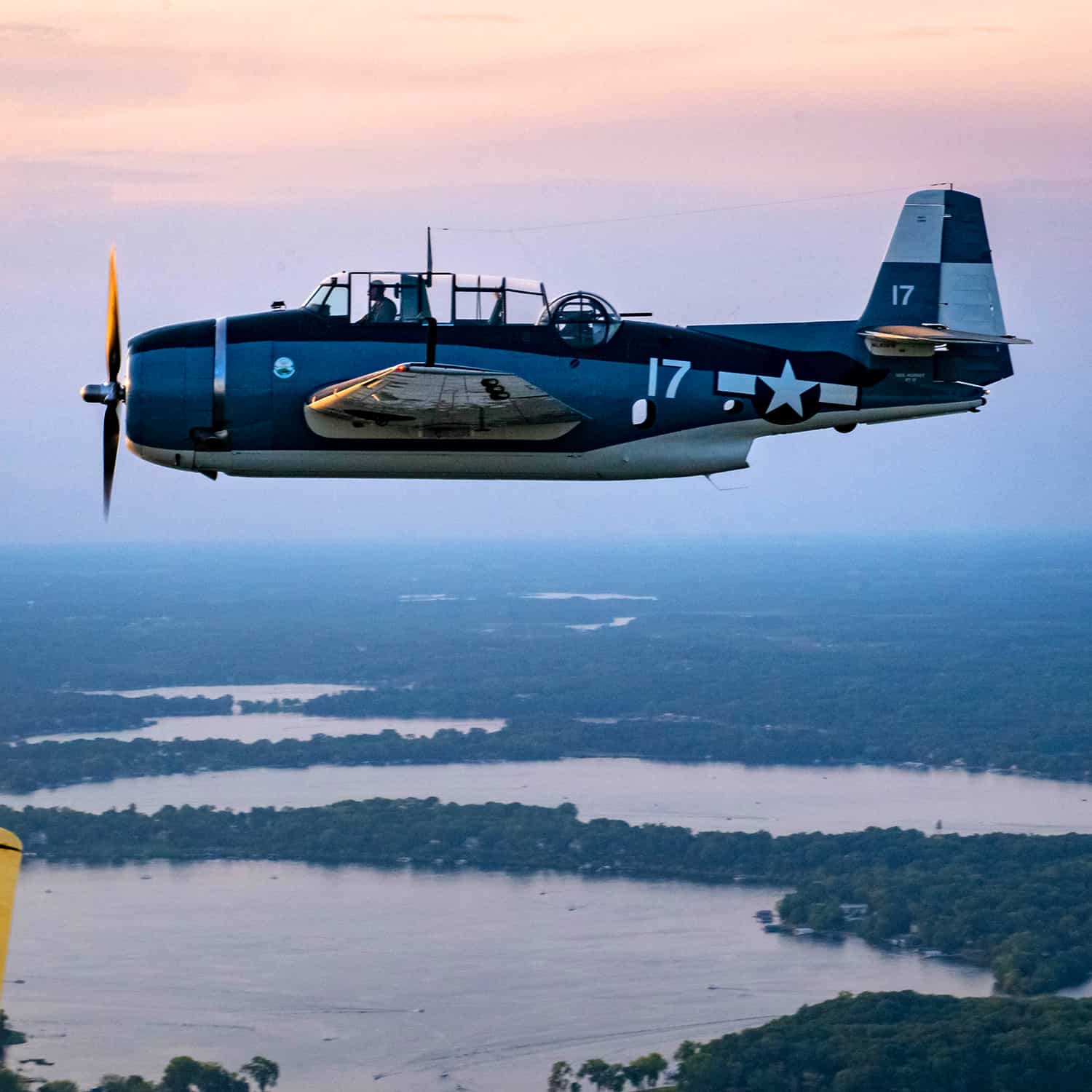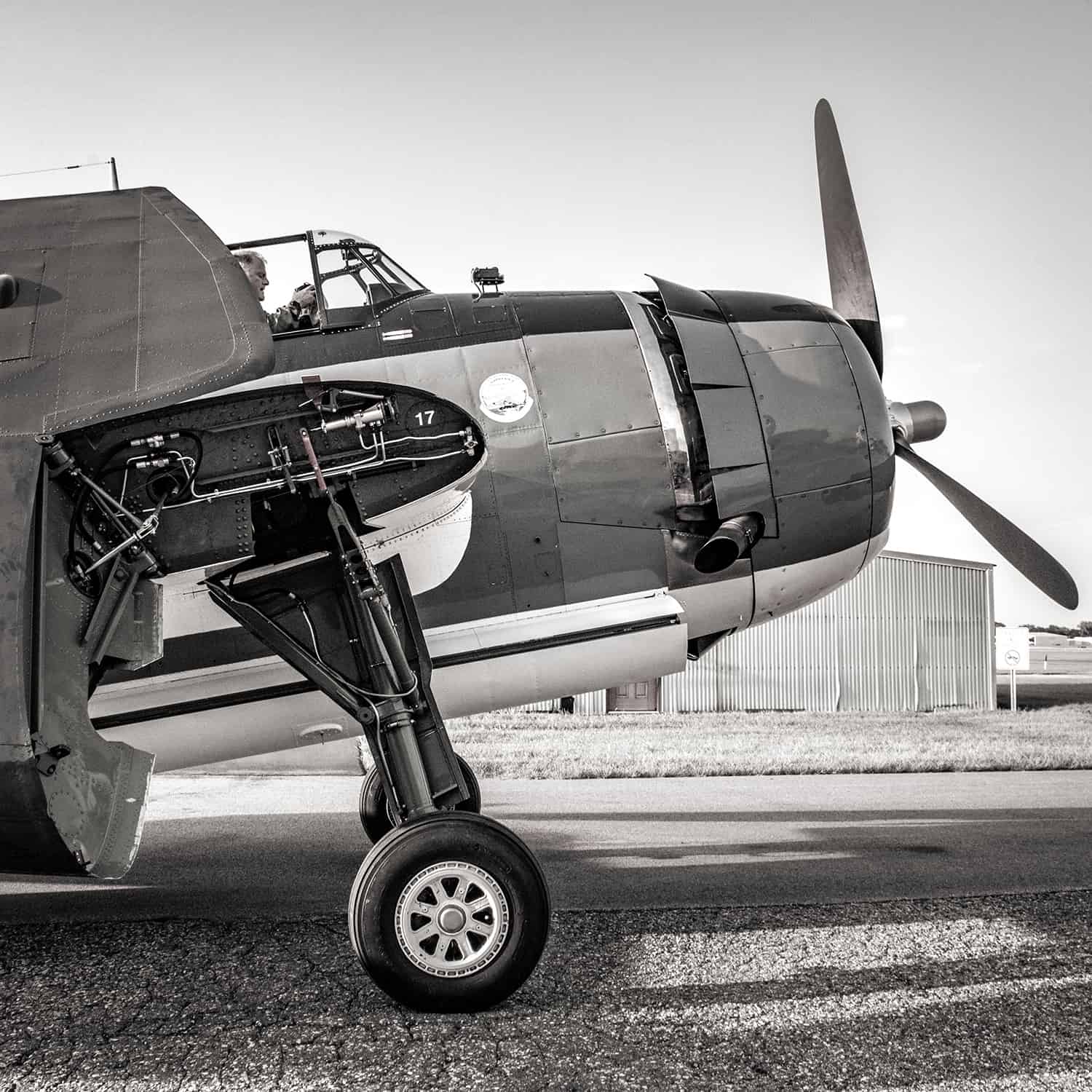grumman (general motors) tbm-3e avenger




Model History:
First entering service in 1942, the Avenger became one of the most outstanding torpedo bombers of World War II. It continued to see action post-war with the last US Navy Avengers being retired in 1954 and in the 1960’s for foreign military.
History of this Avenger:
Assembled by Eastern Division of General Motors, Trenton, NJ, as part of the – second production batch of TBM-3E’s, Bu85459 to Bu86296. Built as a TBM-3E with AN/APS-4 search radar under the starboard wing, strengthened air frame, R-2600-20 of 1900 hp, and provision for drop tanks or rockets underwing. 4657 TBM’s were built under license by Eastern. Production ended in September 1945, Civilian Avengers are registered under Limited Type Certificate (LTC) 8-2 of 17 March 1947, held by Air Trading Corporation, New York, NY.
Military History |
|
| 26 March 1945 | Accepted and Delivered to US Navy from Eastern Aircraft’s Trenton, New Jersey factory with Bureau Number 85882 assigned. Eastern Aircraft was a division of General Motors and built Wildcats and Avengers under license from Grumman Aircraft. |
| March 1945 | En route to Seattle, WA. |
| April 1945 -June 1945 | Assigned to VT-51 (part of CVLG-51) which reformed 25 Jan 1945 after formerly serving on board the USS San Jacinto. President George H. W. Bush flew Avengers as part VT-51 while it was attached to the San Jacinto in 1944. After service on the San Jacinto, VT-51 was stationed at Naval Air Station Pasco (Washington) and Naval Auxiliary Air Station Arlington (Washington). |
| July 1945 – August 1945 | Assigned to VT-151 (part of CVG-151). During this period VT-151 was based at Naval Auxiliary Air Station Corvallis (Oregon). |
| September 1945 – January 1946 | Assigned to VT-11 (part of CVG-11). During this period VT-11 was based at Naval Auxiliary Air Station Santa Rosa (California). VT-11 served aboard the USS Hornet during the last part of World War II. |
| February 1946 | Assigned to Carrier Air Service Unit (CASU) 36 which was based at Naval Auxiliary Air Station Santa Rosa (California). It was the function of a CASU to service, rearm, and make minor repairs on land planes or seaplanes, large or small. |
| March 1946 – 28 December 1946 | Assigned to Naval Air Reserve Training Unit (NARTU) Seattle which was based at Naval Air Station Seattle. |
| January 1947 – March 1947 | Assigned to the aircraft pool at Naval Air Station Norfolk (Virginia). |
| 17 April 1947 | Overhaul (presumably at Naval Air Station Norfolk). |
| April 1947 – August 1948 | Assigned to Service Testing at Patuxent River (Maryland) presumably as part of the Naval Air Test Center. |
| 16 May 1949 | Overhaul (presumably at Naval Air Station Norfolk). |
| May 1950 – 25 January 1952 | Assigned to Naval Air Station Norfolk – Overhaul and Repair, Bureau of Aeronautics, Maintenance and Service. While assigned here the aircraft was stored for a period of time and then modernized. |
| 9 February 1952 – 2 March 1953 | Assigned to Naval Air Station Niagara Falls (New York) as part of the Naval Air Reserve Training Command (NARTC). While stationed here the aircraft was used in a “Post student” training role. |
| 5 May 1953 – November 1953 | Assigned to Naval Auxiliary Air Station Kingsville (Texas) – Naval Air Advanced Training Command (NAATC) – ATU-400 (Advanced Training Unit 400). |
| 1 December 1953 | Assigned to Naval Air Station Corpus Christi (Texas) Overhaul and Repair, Bureau of Aeronautics, Maintenance and Service. |
| 16 December 1953 – 29 February 1956 | Assigned to Litchfield Park (Arizona) for storage. |
| 31 May 1956 | Stricken from Inventory – Total Time 1394 hours. |
Civilian History |
|
| 25 January 1957 | US Navy sells aircraft to Reybold Selk of Selk Company of North Hollywood, CA for $2,600 and registered as N9584Z (Roughly $25,000 dollars in 2021 money). |
| 30 September 1961 | Aircraft sold to Zack C Monroe of Lancaster, CA. |
| 11 October 1961 | Aircraft sold to National City Aircraft Leasing Company of Chicago, IL. |
| 11 October 1961 | Cisco Aircraft Incorporated (Zack Monroe’s company) leases aircraft from National City Aircraft Leasing Company including optional equipment such as 600 gallon borate tank and 950 gallon spray tank. Cisco is an acronym for “California Insecticide Corporation”. |
| 29 January 1965 | Aircraft is sold to Turbo-Mod, Inc after Cisco defaulted on the lease. |
| 9 February 1965 | Aircraft is sold to Michael T. Loening of Boise, Idaho. |
| 1 March 1965 | Aircraft is sold to Loening Air, Inc of Boise, Idaho where Michael T. Loening is President. Michael Loening was a race pilot in the Reno Air Races in the ‘60’s and ‘70’s flying P-51’s in the Unlimited Class. He was also the former president of the National Pilots Association/ |
| 15 June 1965 | Aircraft is sold to Dennis G. Smilanich of Boise, Idaho. |
| 21 June 1967 | Aircraft is sold to Idaho Aircraft Company, Inc (Milt and Dennis Smilanich). Idaho Aircraft Company used the aircraft as a parts source. Idaho Aircraft Company operated Avengers as fire bombers in the western United States in the 1960’s and early 1970’s. Milt and Dennis were both born in northern Minnesota. |
| 29 December 1975 | Aircraft is sold to Ralph M. Ponte of Cedar Ridge, CA. Ralph was a legendary fire bomber pilot in the 1960’s in the western United States and eventually went into business restoring and maintaining aircraft in Grass Valley, CA. He restored at least seven TBM Avengers in the 1970’s. |
| 10 February 1977 – 3 June 977 | Probable switch of airframes between BuNo 53818 and BuNo 85882. Aircraft becomes BuNo 53818 (N9187Z). |
| 14 February 1977 | Major alteration and repair form filed by Ralph Ponte to restore aircraft to military configuration – turret reinstalled, tanks removed, bomb bay doors reinstalled. |
| 11 March 1977 | Aircraft sold to Leo Canavan by Ralph Ponte. Although not listed on the FAA paperwork, the Grand Prairie Daily News on June 16, 1977 names Bill Smith from Arlington, Texas as a co-owner of the aircraft. Leo Canavan was a retired US Air Force fighter pilot and a commercial pilot for the “old” Frontier Airlines which ceased operations in 1986. |
| 23 June 1977 | Limited Airworthiness Certificate issued (no expiration). This is the first permanent Airworthiness Certificate issued to the airplane in civilian use. The first 20 years in civilian use were limited to ferry flights only. It was never used as a fire bomber or sprayer although there is evidence of at least a partial conversion. |
| (c. 1973) | (Most tanker Avengers withdrawn from fire fighting after a series of accidents.) |
| 16 October 1978 | Aircraft sold to B&S Enterprises (Wilbert “Bill” Porter) – Porter Aviation (Horace “Bob” Porter) – Farm Air Flying (John Warner). All three men were partners in Farm Air Flying which is a crop-dusting company based out of Sacramento, California. |
| 19 December 1978 | Request to change registration to N93818. |
| 24 February 1979 | Registration issued to Porter Aviation changing to N93818. |
| 8 March 1993 | Aircraft sold to Amclyde Engineered Products Inc (Wallace Fisk). Wally Fisk was the President and CEO of both Amjet Aircraft Corp and Amclyde Engineered Products. The aircraft was displayed at Wally’s former Polar Aviation Museum at the Anoka County Airport in Blaine, MN. |
| 19 July 1993 | Aircraft sold to Amjet Aircraft Corp (Wallace Fisk). |
| 1995 |
The TBM participated in an event at Pearl Harbor, Hawaii to commemorate the 50th anniversary of the end of World War II. The aircraft (along with others) was winched aboard the nuclear carrier USS Carl Vinson (CVN-70) in Alameda, California and sailed to Pearl Harbor, Hawaii where it flew off the deck of the Carl Vinson and landed at Ford Island. For some video, go here: https://youtu.be/RnXIsX7LxS8?t=1m36s |
| 15 December 2006 | Aircraft sold to 21F LLC (Wallace Fisk). |
| 27 May 2008 | Aircraft sold to 938138 LLC (Larry Lindberg). Larry owns Midwest Medical Holdings in Mounds View, MN. |
| 23 December 2014 | Aircraft sold to 21F LLC (Wallace Fisk). |
| 12 October 2016 | Aircraft sold to Paul Ehlen. |
| 20 January 2017 | Aircraft sold to Rare Birds, LLC. |